Useful tips for storing leeks in your cellar
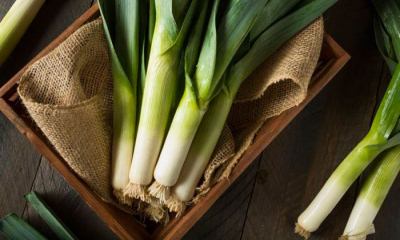 Leek is one of the most valuable vegetable crops with a rich composition of nutrients. With proper storage of a vegetable, vitamins and all valuable properties are preserved in it.
Leek is one of the most valuable vegetable crops with a rich composition of nutrients. With proper storage of a vegetable, vitamins and all valuable properties are preserved in it.
One of the options for organizing storage in the winter is to use a cellar. Read about whether it is possible to store leeks in a cellar or basement, how to properly organize storage of a vegetable for the winter, read the article.
Content
Features and storage conditions for the winter
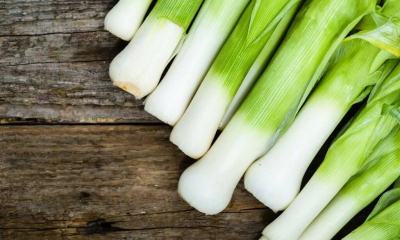 Storage in the cellar allows you to keep the onions throughout the winter. The advantages of this option:
Storage in the cellar allows you to keep the onions throughout the winter. The advantages of this option:
- the possibility of placing a large volume of vegetable products;
- the possibility of organizing optimal conditions.
Conditions suitable for long-term storage are as follows:
- humidity - up to 80 or 85% maximum;
- temperature range - from -1 ° С to +1 ° С;
- the presence of fresh air.
Maintaining the temperature not higher than + 1 ° C allows the crop to be well stored and not to rot. You will find all the most important things about storing leeks in winter here.
Harvest preparation
To keep the leek in the cellar long enough should prepare:
- premises;
- container;
- the bow itself.
Variety selection
Leeks have many varieties of varieties:
| Ripening time | Vegetation period, days | Varieties |
| Early | 90-130 | Elephant trunk, Vesta, Columbus, etc. |
| Average | 150-160 | Winner, Kazimir and others. |
| Late | 180-200 | Autumn giant, Alligator, etc. |
For storage in the winter, it is preferable to leave late-ripening and mid-ripening varieties... The harvest time depends on the climatic zone and weather conditions.
Vegetables that are lagging behind in growth should be eaten immediately after harvest, without leaving for storage during the winter.
Do you need processing?
 Without preliminary preparation, the harvested crop of vegetables and fruits should not be sent to storage. One of the main points before placing in the basement is sorting.
Without preliminary preparation, the harvested crop of vegetables and fruits should not be sent to storage. One of the main points before placing in the basement is sorting.
At this stage, damaged plants are rejected, which cannot be stored for a long time.
The harvested vegetable should be prepared for storage:
- shake off so that no earth remains between the leaves;
- dry;
- trim.
Drying should be done in the shade. At the same time, no moisture should remain between the leaves.Also, excessive drying of the leaves should not be allowed.
If the covering green mass has defects, it is removed in places of damage. The tops are shortened, leaving 1/3 of the original length. The roots also need to be trimmed 1/2 the length.
Cooking a basement or other room
Before placing the harvested leek crop in the cellar, the room should be disinfected and the remnants of last year's vegetables and fruits that remain in it should be removed.
You need to start preparing the basement even before harvesting:
 Sanitization is carried out after the unloading of stocks left over from last year's harvest.
Sanitization is carried out after the unloading of stocks left over from last year's harvest.- Rubbish should also be taken out as it can become a source of infection.
- Drying of the equipment available in the cellar and containers. If possible, then it is better to do it in the fresh air.
- Treatment of the room itself with disinfectants (whitewashing with fluff lime, using a solution of potassium permanganate, etc.).
- If necessary, the cellar room is divided into separate compartments.
When the cellar freezes in winter, it will be necessary to carry out insulation.
Choice of containers
The peculiarity of storing leeks is vertical placement in the selected container at a slight slope. Suitable containers may include:
- plastic bucket;
- wooden box;
- other containers with sides 0.2-0.25 m high.
After laying the onion, you should also sprinkle the roots with wet sand. The layer should be about 0.15 m.
The presence of sand or peat at the bottom of the container allows you to cover the roots, which favorably affects the storage quality of the vegetable.
How to increase the term?
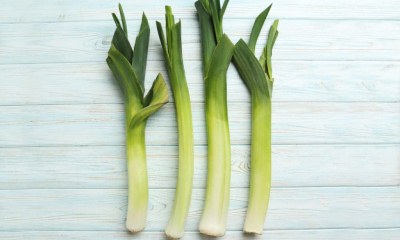 The average storage time for leeks in the cellar is six months. In this case, all the necessary indicators of the room (humidity, temperature, etc.) must be maintained.
The average storage time for leeks in the cellar is six months. In this case, all the necessary indicators of the room (humidity, temperature, etc.) must be maintained.
The bow is periodically examined. If signs of spoilage appear (unpleasant odor, uncharacteristic softness, mucus formation), then the root crop should be rejected as unfit for food.
You can extend the shelf life by additional processing of the harvested vegetable. For this, the following options are suitable:
- drying;
- freezing;
- canning.
When frozen, cut and compactly packed in containers or bags, onions can be stored until the next harvest. To do this, the vegetable:
- wash;
- dry;
- cut into circles.
Together with what vegetables and fruits you can?
When placing onions in the cellar for storage, it should be borne in mind that special conditions are required for it, not suitable for most other vegetables and fruits. Low humidity is an obstacle for the rest of the harvest in such conditions.
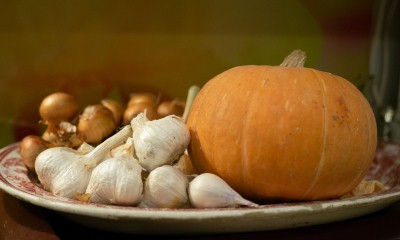 The only exceptions are 2 vegetables:
The only exceptions are 2 vegetables:
- Pumpkin.
- Garlic.
They can be stored with onions. For garlic, conditions suitable for leeks and other types of onions are sufficient. Moreover, the temperature of garlic can tolerate even lower.
Pumpkin requires maintaining the temperature at a level of +4 to + 12 ° C, and a humidity of about 80%.
Potatoes require similar storage conditions that do not have critical differences... But you shouldn't combine them with onions in the same room - the leek is saturated with moisture from the "neighbor", which will significantly reduce its shelf life.
Recommendations
In order for the leek harvest to be better stored, you can use the following tips:
- Periodically inspect the stored crop, rejecting spoiled root crops and cleaning the upper layers of dried up.
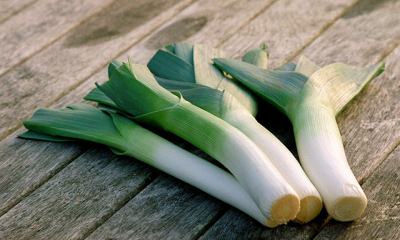 Ventilation of the room should be carried out every 2 weeks to prevent stagnant air, the formation of unpleasant odors and the development of pathogenic organisms.
Ventilation of the room should be carried out every 2 weeks to prevent stagnant air, the formation of unpleasant odors and the development of pathogenic organisms.- Large vegetables keep better than small ones. In this regard, it is advisable to eat them after substandard conditions, which will not last long.
- If there are no conditions for storing a large amount of fresh leeks, they can be pickled or dried.
- Unwashed vegetables are better preserved.
During long-term storage in the cellar, the concentration of vitamin C in the bulb increases by 1.5 times.
You will find a lot of useful and important information about the methods and conditions for storing onions in this section.
Related Videos
How to store leeks after harvesting, the video will tell you:
Conclusion
Leeks are not very picky about the conditions of keeping in the cellar. With proper storage, it is possible to have a fresh vegetable on the table for many months after harvest.
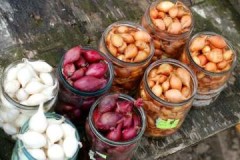
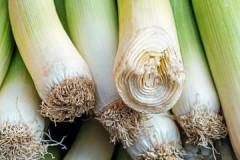
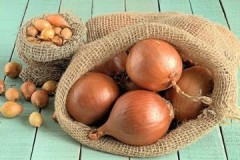
 Cleaning
Cleaning Wash
Wash Ironing
Ironing Technics
Technics Cleaning products
Cleaning products Storage and care
Storage and care